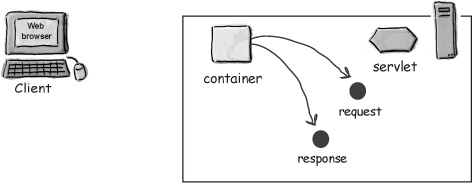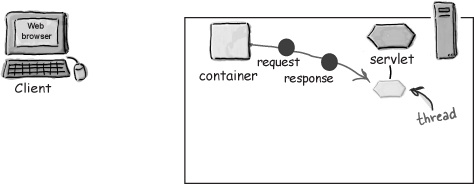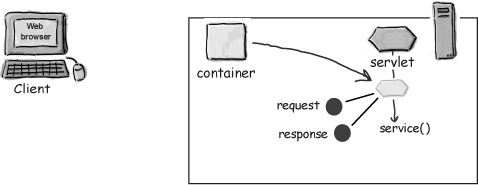How the Container handles a request
We’ll save some of the juicier bits for later in the book, but here’s a quick look:

User clicks a link that has a URL to a servlet instead of a static page.

The container “sees” that the request is for a servlet, so the container creates two objects:
1) HttpServletResponse
2) HttpServletRequest

The container finds the correct servlet based on the URL in the request, creates or allocates a thread for that request, and passes the request and response objects to the servlet thread.

The container calls the servlet’s service() method. Depending on the type of request, the service() method calls either the doGet() or doPost() method.
For this example, we’ll assume the request was an HTTP GET.

The container calls the servlet’s service() method. Depending on the type of request, the service() method calls either the doGet() or doPost() method. For this example, we’ll assume the request was an HTTP GET.
The thread completes, the container converts the response object into ...
Get Head First Servlets and JSP, 2nd Edition now with the O’Reilly learning platform.
O’Reilly members experience books, live events, courses curated by job role, and more from O’Reilly and nearly 200 top publishers.

